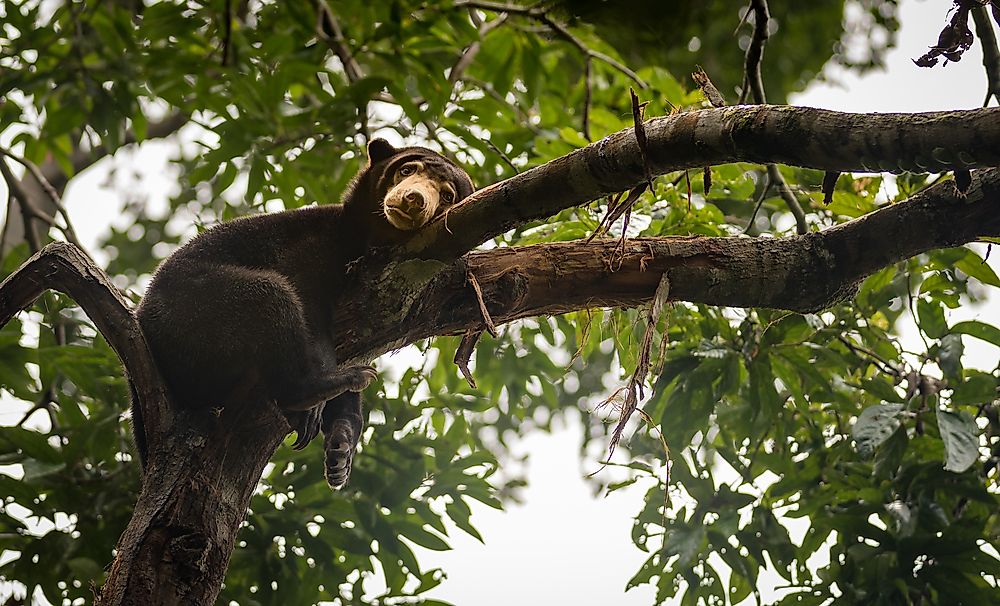Where Do Sun Bears Live?

The sun bear (Helarctos malayanus) is a species of bear that is native to the tropical forest regions of Southeast Asia. The species has been classified as "Vulnerable" on the International Union for Conservation of Nature (IUCN) Red List, as the sun bear's population is believed to have dropped by more than 30% worldwide over the last three bear generations. This is related to significant habitat loss resulting from large-scale deforestation in Southeast Asia over the same time period. The sun bear is also popularly known as the "honey bear" because of its appetite for honey and honeycombs. A crescent or U-shaped patch of light colored hair on the chest also contributes to the sun bear's name. It is the smallest species of bear in the world, and is the only bear that is tree-dwelling and adapted to living in the jungle. Sun bears are elusive and rare animals, and very little is known about their habits and behaviors in the wild.
Habitat
The sun bear inhabits tropical rainforests in Southeast Asia, particularly in countries such as Vietnam, Cambodia, Laos, Peninsular Malaysia, Thailand, Myanmar, Bangladesh, Eastern India, and the southern Yunnan Province in China. They are also common on the islands of Borneo and Sumatra in Indonesia. The species is now scattered sparsely throughout its former range, and has become locally extinct in many areas, particularly in mainland parts of Southeast Asia. Additionally, the sun bear's current population and distribution in eastern parts of Myanmar and Yunnan is unknown. The sun bear's habitat is linked to tropical evergreen forests in regions that offer food availability year-round. Unlike other bear species, sun bears do not hibernate, and are typically solitary animals, except for females, who are usually seen with her cubs.
Behavior and Lifestyle
Sun bears spend most of their time on treetops, and occasionally sleep in nests that are built in tree canopies using leaves and tree branches. Their paws have adapted for climbing trees, which they can do with remarkable speed, and also have long curved claws. They can also climb trees by hugging the trunk using their forelimbs, and gripping with their strong teeth. Sun bears are primarily diurnal animals that spend most of the day foraging for food, and rest in treetops at night. However, in regions where their habitats have been significantly affected by human activities, such as deforestation, sun bears have become nocturnal in order to avoid interaction with humans.
Threats
Given their large size and tree-dwelling behavior, an adult sun bear has very few predators in its natural environment. Primary predators include tigers and other large cats, although sun bears have a unique way of escaping attacks from these carnivorous animals. They have loose skin around the neck that enables the bear to turn around or spin, and bite its attacker. However, sun bear cubs are more vulnerable, and are preyed on by many jungle predators, including large birds of prey. Currently, the greatest threat to the sun bear is the loss of habitat due to deforestation. In regions where agricultural plantations have encroached on their territory, some sun bears have been known to raid palm plantations, eating the young shoots and resulting in confrontations with farmers.











